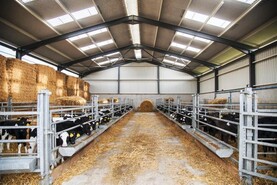Farmers and those looking at restoring old farm buildings and houses are being advised to get advice and approach any restoration with “gentle rehabilitation” in mind in a new strategy to preserve such buildings.
The strategy, first mooted in January of this year, is available on the Department of Heritage’s website.
The vernacular is made up of buildings and other items that were almost always built or made by the occupants and users themselves, along with their families and neighbours, drawing on longstanding traditions. Examples include old houses and farm buildings.
Abandonment
The first theme of the new strategy looks at the causes of abandonment of vernacular buildings, at the potential for their rehabilitation and at ways of dealing more effectively with them.
The second focuses on the sustainability of these buildings, feeding the results into conservation and maintenance. The importance of nurturing and rediscovering crafts and materials is critical, the strategy says.
The third theme looks forward, seeking to present models for refurbishing or extending vernacular houses. The best way to treat a derelict vernacular building is “by way of gentle rehabilitation”.
Traditions
Launching the strategy, Minister of State for Heritage Malcolm Noonan said the strategy seeks to address the continuing loss of buildings, features and settings, and the erosion of building traditions and skills.
“Popular attitudes to our built vernacular heritage range over the gamut of emotions, from negative associations with difficult times, to nostalgia and, more recently, real enthusiasm.
“Looking afresh at this heritage, with its venerable building traditions, will, I believe, enhance our sense of identity as a people, as well as encourage the continuing use of vernacular buildings, settlements and landscapes as viable, attractive and distinctive places in which to live and work,” he said.
Other examples
Our surviving built vernacular largely comprises rural houses, farm buildings and yards, but it also includes some urban buildings.
There are also a wide range of features such as lazy-bed cultivation, seaweed grids, limekilns, gates and stiles, old field boundaries, lone bushes, green lanes, dancing places and many others.
The Department said there are also “many vernacular hamlets and some very significant vernacular landscapes”.
The strategy will look at ways of recognising and managing these for the future.






 This is a subscriber-only article
This is a subscriber-only article










SHARING OPTIONS: